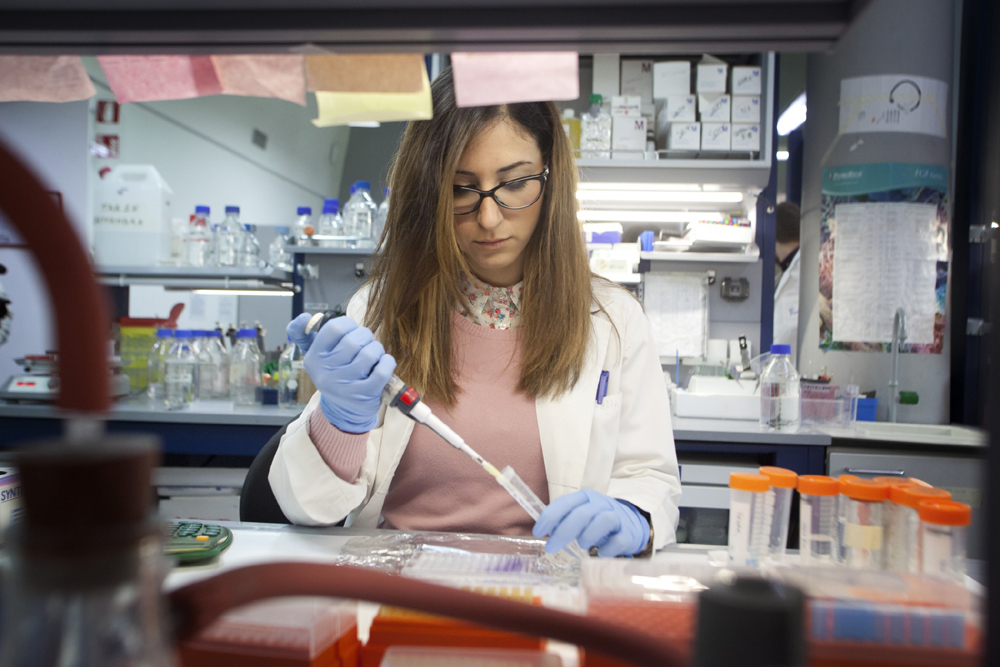Three floors, four large open-plan laboratories designed to host over 200 Italian and foreign researchers in an area totalling over 5000 square metres: the new premises of the Telethon Institute for Genetics and Medicine (Tigem) is set to open in the former "Olivetti area" in Pozzuoli, in a building that has been renovated and reconverted partly thanks to an investment of some € 10 million from the National Operative Programme for "Research and Competitiveness" 2007-2013, which allowed for the use of European Union funding.

Founded in 1994, Tigem has expanded its research activity over the years, thanks to the structural support of Telethon, which has invested € 58.5 million in the Institute, and to the funding the Institute itself has been able to attract from institutions, foundations and companies both in Italy and abroad.
Tigem's current staff of 180, including several foreign researchers and Italian researchers who have returned to Italy from abroad, will be increased by 30% with the move to the new premises scheduled for spring 2014.Presented at the Aeronautical Academy of Pozzuoli before Italian President Giorgio Napolitano, the new premises of Tigem will be named in memory of Susanna Agnelli, the unforgettable president of Telethon from its foundation in 1990 until her death in 2009.
At the official presentation, the current president of the Telethon Foundation, Luca di Montezemolo, declared: «Tigem shows that successful, world-class research can still be conducted here in Italy, based on merit, efficiency and transparency with regard to how research projects are funded. Thanks to its ability to attract funding and researchers even from abroad, Tigem represents an opportunity for development for Italy and for the South».Through its 19-year existence, Tigem has become an international benchmark for research into the mechanisms underlying genetic diseases and the development of preventive and therapeutic strategies.
Telethon researchers have had a total of 780 articles published in international scientific journals, identifying 25 genes responsible for rare genetic diseases that were hitherto unknown. Thanks to the continued support of Telethon, Tigem is today able to obtain funds from calls for proposals issued by international bodies such as the European Union and the European Research Council.Companies are also investing in Tigem: thanks to an agreement signed between Telethon and the pharmaceutical firm Shire Plc, the Institute will receive funding of € 17 million for research projects to be carried out in the five-year period from 2012 to 2017; this money will allow for the results of scientific research to be turned into treatments that can be applied to patients.
Francesca Pasinelli, General Manager of Telethon, commented: «The expansion of Tigem is a victory for Telethon, which has had faith in this project and has supported it since 1994. Today’s achievement, represented by the new home of the Institute, has been made possible thanks to the contribution of the Italian people who have been lending their support to Telethon for 23 years, and it spurs us on to keep improving and to make an increasingly significant contribution to research into rare genetic diseases, aimed at coming up with treatments for patients».
Tigem Director Andrea Ballabio, who in 1994 decided to move back to Italy from the USA to head the research centre, said: «The work we do at Tigem is founded on three essential aspects: passion, merit and a professional approach. Thanks to Telethon and to Italian generosity, Tigem researchers have been given the opportunity to effectively study the mechanisms underlying serious diseases that, because they are so rare, have not received the necessary attention, at least not until a few years ago. This shows that, even in Italy, merit allows for operations made difficult by the current economic situation».
In addition to the 4 open-plan laboratories, the new Tigem premises will also include an auditorium seating 160, offices for the heads of the research projects and for administration, technical areas given over to research tools such as electronic microscopes and computers for bioinformatics, a gym and areas for study and relaxation. The new Institute will be housed in the former Olivetti area in Pozzuoli, a place that played an important role in Italian industrial history. The Olivetti factory in Pozzuoli dates back to 1954, when it was built on a project by the architect from Naples Luigi Cosenza. When it opened, the factory employed a total staff of 1300. Over the years, a variety of mechanical and electronic devices were produced in the factory. From the late Eighties, the factory was gradually converted into office premises.